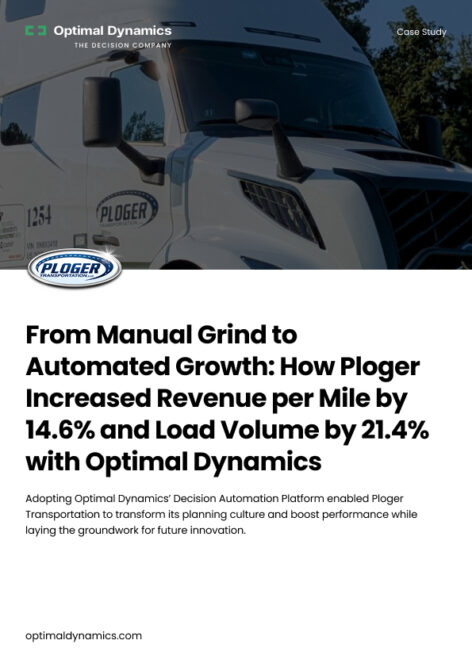Ploger Transportation has achieved significant growth by increasing its weekly revenue per mile by 14.6% and load volume by 21.4% through the implementation of Optimal Dynamics’ Decision Automation Platform. Facing rising operational costs and a competitive market, the company sought more efficient strategies for managing its freight network.
To enhance its operational efficiency, Ploger Transportation replaced traditional methods involving spreadsheets and manual dispatching with a data-driven approach. The adoption of Optimal Dynamics allowed the company to automate its decision-making processes, resulting in streamlined planning and improved dispatching capabilities.
Transforming Operations with Data-Driven Insights
The transition to a more automated system has transformed Ploger’s planning culture. With a focus on continuous optimization, the company has not only seen a boost in revenue but also improved satisfaction among drivers and clients. The use of the Decision Automation Platform has enabled Ploger to make consistent and profitable decisions based on real-time data.
One of the key changes involved automating dispatching and spot-freight sourcing. This shift has eliminated many of the inefficiencies associated with manual processes, allowing planners to trust and rely on automated recommendations. The successful implementation included several change-management steps that facilitated the acceptance of this new system among employees.
Measurable Success and Future Innovations
The results are clearly quantifiable, with the 14.6% increase in revenue per mile and 21.4% rise in load volume marking significant milestones for the company. These improvements not only contribute to the financial health of Ploger Transportation but also establish a foundation for future innovations.
By leveraging automation, Ploger Transportation has positioned itself for long-term success in a challenging market. The case study detailing these developments provides insights into how other companies might also benefit from adopting similar strategies. For those interested in learning more, the full case study is available for download.
This strategic shift highlights the importance of embracing technology in the logistics sector, where efficiency and adaptability are critical for survival and growth.







